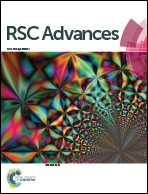Effects of reactive oxygen species on the biological, structural, and optical properties of Cordyceps pruinosa spores
Abstract
Effects of reactive oxygen species (ROS) on the optical, structural, and biological properties of Cordyceps pruinosa spores were studied. Both the atmospheric pressure plasma jet (APPJ) and chemically induced ROS significantly reduced the viability of C. pruinosa spores. Changes in the peak intensity of fluorescence and the depth of the dip in the circular dichroism (CD) spectrum suggested that both the APPJ and chemical induction of ROS can cause structural alteration of the spore cell wall. Fluorescence spectra of propidium iodide-stained spores indicated that alteration of cell wall (and/or membrane) permeability is involved in the change of spore viability after plasma treatment. High-performance liquid chromatography analysis of C. pruinosa ethanol extracts showed that the APPJ and chemical induction of ROS decreased the amount of ergosterol in the spores, indicating that excessive oxidative stress destroys cellular antioxidant capacity. Absorption spectroscopy, CD spectroscopy and agarose gel electrophoresis of the DNA extracted from the plasma-treated spores showed that a decrease in the DNA content and DNA degradation can be caused by either of the two treatments. The nonthermal APPJ and chemical induction were used to generate ROS in an aqueous solution. Electron spin resonance spectra provided evidence that hydroxyl radicals and singlet oxygen exist in the plasma activated water (PAW). Overall, the decline in spore viability, in antioxidative capacity, and in DNA content can be attributed to structural alteration of the cell wall and cellular damage by reactive species originating from the APPJ and the PAW.


 Please wait while we load your content...
Please wait while we load your content...